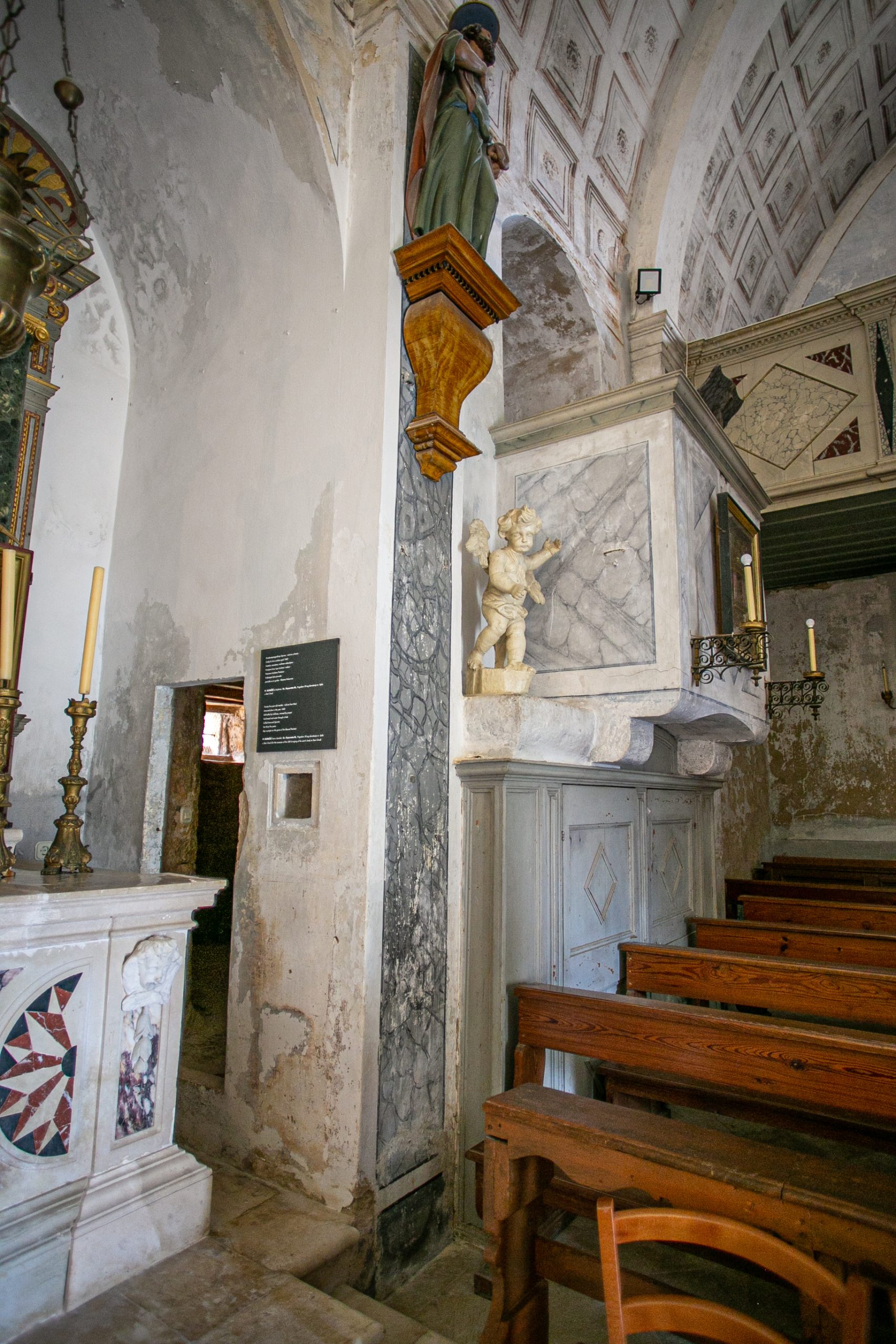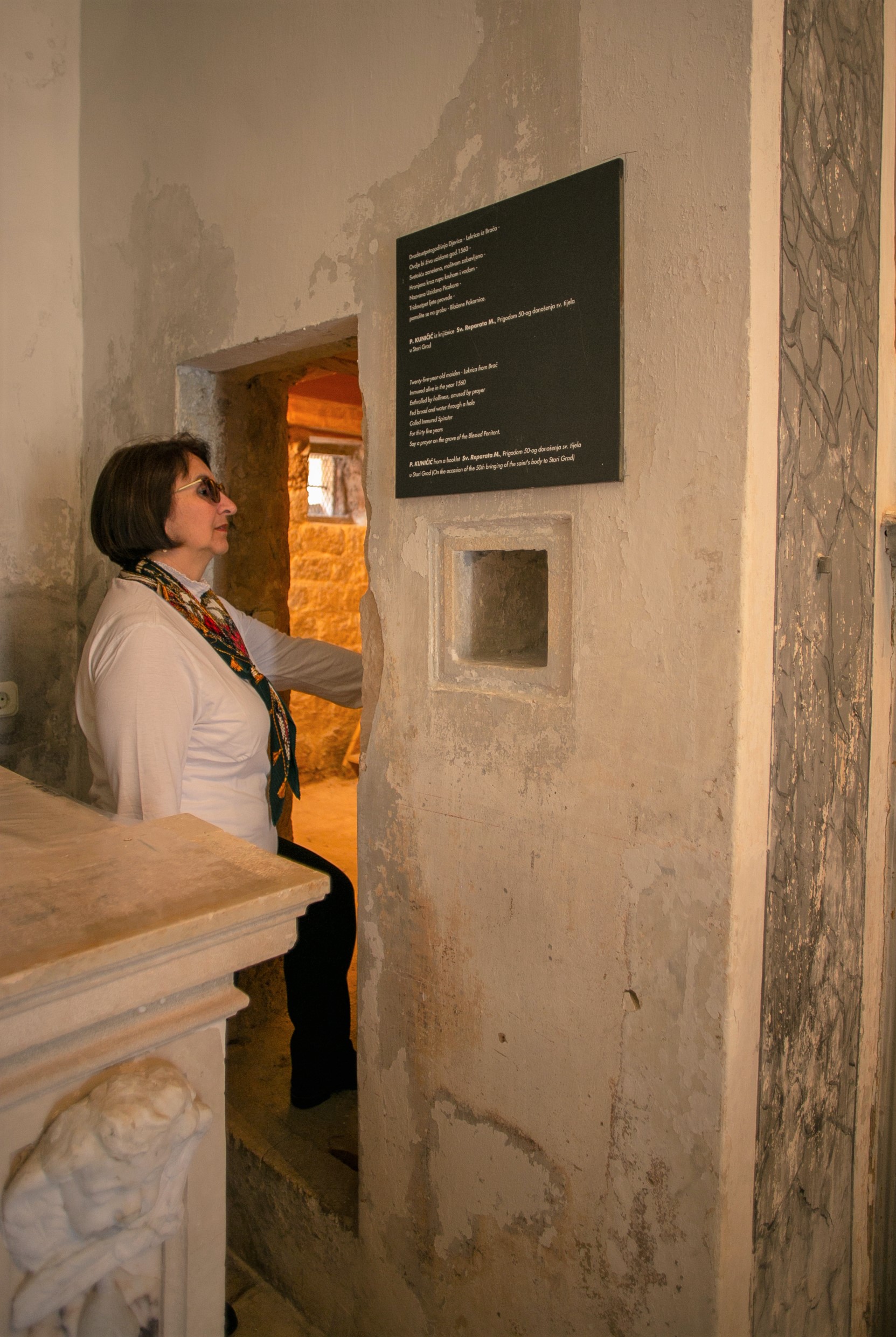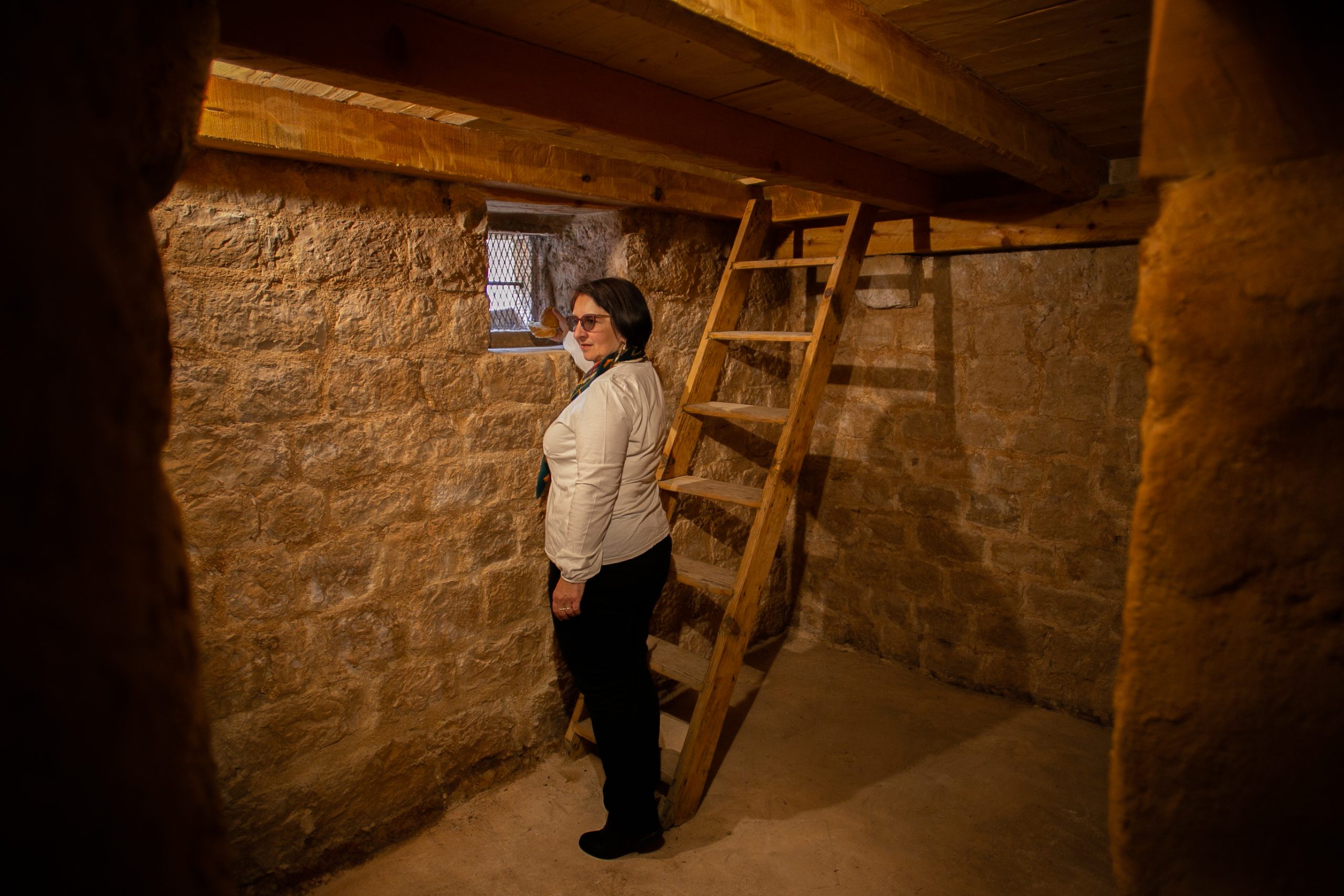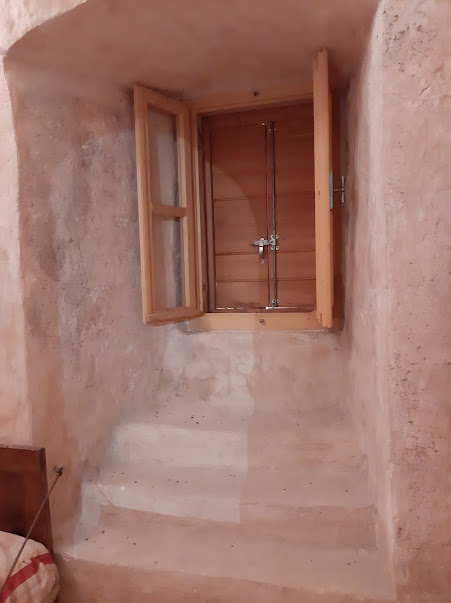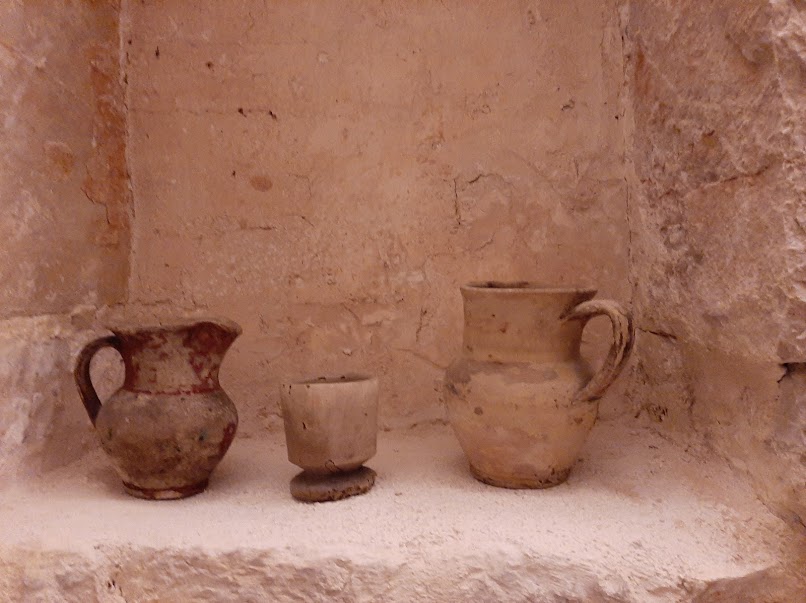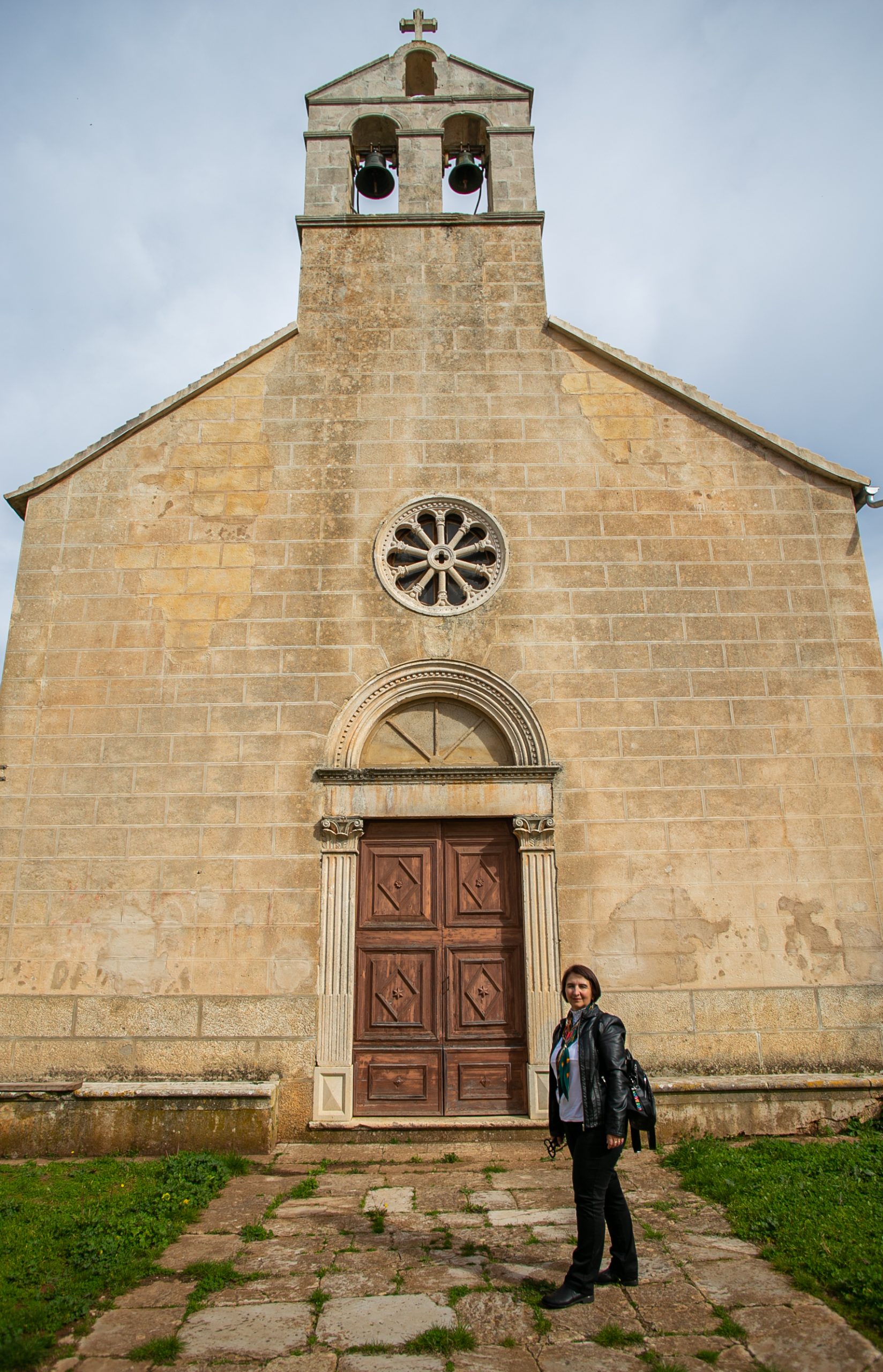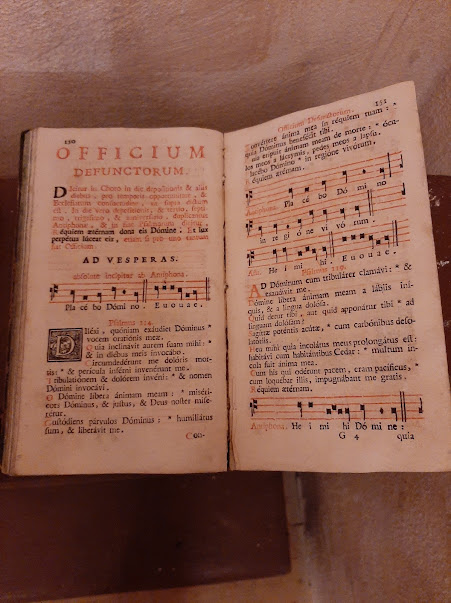LUKRICA, LORD`S SHEEP

A Christian ascetic Lukrica from Brač, has been the subject of stories and speculations since the 16th century in Stari Grad on Hvar. Scarce historical sources hide the secret of the real truth about a 25-year-old girl who made an unusual, and a very daring decision for her time, to move from one island to the other. The story of the young shepherdess from Brač has been intriguing for 463 years, while the following question hovers over the church of St. Nicholas in Stari Grad: Why did Lukrica decide to wall herself up alive?
Although the channel between Hvar and Brač is only 4 miles wide and any better swimmer could swim across it, for Lukrica that short trip to another island seemed as long as a lifetime. On the way of no return, her whole body trembled, but not from the gust of wind carried by the sea. As she exited the boat, her life flashed before her eyes. She lost her balance momentarily as the boat swayed and almost fell over. The black sheep, the sinister inner voice, gained momentum at that precise moment: “Give up, give up!” But Lukrica understood the language of Brač’s furry creatures too well to get upset. The courage with which she set out suddenly began to mix with fear. She was fighting with herself, but she was more determined than ever before.
She had lost a lot of time anyway hesitating and thinking about everyone who would be affected by her departure, but with every waking day, she got more confident about her decision. She was breaking under the pressure of her father, who repeated daily that the time for marriage had come and gone. When he returned from the field that afternoon, it was over: “Lukre, you`re not getting any younger. I found you a man – Šimun from Nerežišća. He is a widower, and he has a son. You’ll be fine with him. He has a large flock of sheep, and you are trained for that job.” Lukrica’s heart fell. She didn’t want Šimun, nor Antun, nor Jure. She loved her flock more. In fact, she didn’t want anyone, that’s why she was still unmarried at 25.
In addition to being hardworking, Lukra was pious, like all the people of Brač. She prayed to God to save her from marriage and from the daily pressure from her father that she would remain a “spinster”. And then she heard about third-order nuns Picokare from the shepherdess Ana. There was one group in Nerežišća, and three on the southern side of Brač. Ana also told her how Picokare dedicated their lives to God, prayer and helping the old and infirm. It tickled Lukrica’s imagination, and it seemed that she had found a solution to her problem.
In front of her parents, she pretended as if everything was normal. While her mother lamented that she would soon leave home after she got married, and her father was happy that he no longer had to worry about her, Lukrica began to think intensely about her departure and about living as a Christian ascetic. Picokare were, on the one hand, free women, isolated from their own families. They weren`t proper nuns because they did not take monastic vows. They could change their minds at any moment, leave the community and get married. But that wasn’t enough for Lukrica. If she were to leave home, she would go far away from her village, far away from her flock, far away from Brač, far away from the world she knew, and that knew her. Where no one would find her, where she wouldn`t have to look at her crying mother or her angry father. Where no one would persuade her to give up on her plan. Where her soul would find solace, that is where she would go.
In 1559, at the age of 25, Lukrica arrived in Stari Grad with the desire to be walled up alive. Making that decision was the most difficult part, everything else was easier. Flaming tongues near Murvica summoned the ship from the other shore from the cove of Žukova on Hvar. After the ship arrived and docked for a short time to board passengers, it slowly sailed from the shore. Moving away, Lukrica kept looking at the flaming ray of light and the beloved island that was slowly shrinking and disappearing in the dark night. And then everything went black.
When dawn broke on the other side of the channel, on the Hvar side, Lukrica took one last look in the direction of her home behind the top of the Vidova mount. Then she turned around carrying a small bundle in her hands and went down the path to Stari Grad. She saw something in front of her that she had never seen in her life. A deep indented cove and moored wooden sailboats. In the cove, there were many houses in one place, and all of them were facing her island of Brač. Among the houses and around the town, on both sides of the shore, she counted as many as six bell towers. They were white, and there were exactly as many as sheep in her flock. She hurried down, towards her destination.
In the town, she found a pastor who was initially ambiguous about the lucidity of the frail girl who appeared at his door asking him to be “walled up alive”. The only condition that Lukrica put forward was that her house was next to the church, so that she could participate in eucharistic rites and that her sacrifice would be meaningful. After having an extensive conversation with her, he concluded that Lukrica was sane and that here intentions were serious. Therefore, he decided to comply with the wishes of the future ascetic by adding a part next to a church, and after deliberation, he decided which church. There were Picokare of St. Jerome and St. Vincent just like on Brač. Masses were not celebrated in St. Stephen’s Cathedral because the church was desolate. At the Church of St. Mary/John, which took over the role of the parish church, the ascetic would be too exposed to the public. There were Dominicans in the Church of St. Peter. Therefore, they chose the covenant Church of St. Nicholas. This patron saint and the guardian angel of children, sailors and travellers, brought his lost sheep back to the right path.
When the hatch was finished, everything was ready for the solemn liturgical ceremony. Solemn? It was so for Lukrica, but for others, it was bizarre, to say the least. The ceremony resembled a funeral because by being locked in a cell, the ascetic becomes dead to the earthly world. While the parishioners sang “May angels take you to heaven…” Lukrica, trembling with excitement, crossed the threshold with her foot wearing a white cloth sock. And then the key turned in the lock. All the paths since birth, the cobbled paths of Brač, over the Vidova mount and the sea, led her to this moment. Here, in her own peace, in prayer, but by no means solitude. She wasn`t afraid because she was not alone. That black sheep still disturbed her occasionally, but then it got quieter and quieter. God was by Lukrica`s side, and He helped her complete her sacrifice to the very end.
Lukrica’s life depended on the alms she received in the form of food and water at the small opening of her hatch. The people of Stari Grad never forgot about the sweet soul enclosed in those four walls, no matter how hungry they were. They asked her to pray for them and thus expressed their gratitude. The children learnt about Lukrica from their parents, and some even used her to intimidate the children. The braver ones, on the other hand, couldn`t resist their curiosity. She would hear them sneaking up against the wall on the outside trying to be as quiet as possible. And she would drive them away by making various sounds.
In general, sounds were Lukrica’s only communication with the outside world.
One hot summer day, she heard terrifying sounds. It wasn’t a rooster, a bleating of a goat or a child’s cry that she would hear every day. She heard shouts, screams, commotion. She heard a crash, breaking and cracking. And then, when the night fell, she saw red flaming tongues on the wall opposite the hatch. Not long after that, she began to cough as the smoke seeped in through the opening and filled both levels of her hatch. Fortunately, as the opening was always open, the smoke cleared. The terrible sounds and the fire lasted exactly as many days as Lukrica counted the fingers on one hand. In those days, no one came to her hatch. She wasn`t hungry or thirsty, anyway. She knew what she had to do. She spent the entire time praying for the people and the town which had become her second home. She wasn`t afraid, she was ready to accept her fate. She was ready but also safe. None of the intruders knew she was inside. During that terrible invasion, almost all the churches of Stari Grad were damaged. But not the church of St. Nicholas. The church and the hatch saved Lukrica’s life.
Eight years after the Ottoman armada ravaged Hvar, Bishop Valier of Verona came to list the churches and their inventory. In addition to all the real estate properties and the condition in which they were found, he also, miraculously, listed one living person – our Lukrica. In a few sentences, she told him how old she was, and when and how she got there. Needless to say, the bishop was taken aback by the fact that in this community he would find an ascetic who decided to isolate herself from the world in order to devote herself completely to God. Until then, she had spent 20 years at the church, so he didn`t have any doubt about whether he would list her. By being on the list, Lukrica has never been forgotten, she lives on in the oral tradition and memories of the local people.
The ascetic Lukrica spent a full 35 years imprisoned at her own will, and at the age of 60, she transferred from the earthly life to God`s embrace. She died quietly and self-effacingly, just as she had lived. One morning, the little birds ate the breadcrumbs left at the opening of the hatch, and only the fragments of the water cup remained. The news of her death spread like lightning through the town where everyone had a personal opinion about Lukrica. And yet, regardless of condemnation or approval, the town was shrouded in sadness and mourning. The story began circulating among the people that at the time of her death Lukrica had huge bent nails and long hair all the way to the floor. Lukrica, fragile and pale like the white fleece of an innocent lamb from Brač, was buried in the spot next to the threshold she crossed for the first and last time in her life. Since then, Lukrica has lived in one of the stories of Stari Grad, and even today, almost five centuries later, her choice of life divides people and raises questions.
Ascetism, which introduced Lukrica to the world of contemplation and isolation from people, attracted people and encouraged them to different attitudes, but also to a story that has been passed down from generation to generation. Thanks to Bishop Valier, the list is to this day the only and the most valuable evidence of Hvar’s “girl from Brač” and of the only way of life that made sense to Lukrica – ascetic, walled-up devotee, Lord’s sheep.




